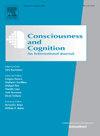How people estimate the prevalence of aphantasia and hyperphantasia in the population
IF 2
3区 心理学
Q2 PSYCHOLOGY, EXPERIMENTAL
引用次数: 0
Abstract
This study examined how people estimate the prevalence of aphantasia (extreme lack of visual imagery) and hyperphantasia (extreme abundance of visual imagery) in the population and how their own imagery and verbal skills’ evaluations predict these estimations. Participants read the descriptions of extreme imagery and evaluated the percentage of individuals within a population to whom they apply. They also completed questionnaires assessing their cognitive skills and experiences related to imagery. We also assessed evaluations of sensory sensitivity as a related individual difference domain. The findings revealed significantly higher prevalence estimates for hyperphantasia than aphantasia in both population-level and self-rated measures. Consistently, these evaluations showed a shift toward positive values for object imagery skills, while no such pattern was observed for spatial imagery or verbal skills. Participants estimated the prevalence of hyperphantasia in the population at 37–53 % and aphantasia at 27–32 %, far exceeding the rates in the literature (approximately 3 % for hyperphantasia and 1 % for aphantasia) and their own vividness ratings. A similar trend was observed for sensitivity. Higher self-rated object imagery skills, but not spatial imagery or verbal skills, predicted higher population hyperphantasia estimates. Additionally, population-level measures from both the imagery and sensitivity domains predicted the estimated rates of both hyperphantasia and aphantasia in the population. Our work contributes to the understanding of public perceptions of visual-spatial cognitive diversity and suggests that self-observed traits may shape beliefs about the prevalence of these traits in the general population.
人们如何估计幻想症和幻想症在人群中的患病率
这项研究调查了人们如何估计人群中幻觉症(极度缺乏视觉意象)和幻觉过度症(极度丰富的视觉意象)的患病率,以及他们自己的意象和语言技能评估如何预测这些估计。参与者阅读极端图像的描述,并评估他们所应用的人群中个体的百分比。他们还完成了调查问卷,评估他们的认知技能和与意象相关的经历。我们还评估了作为相关个体差异领域的感觉敏感性评估。研究结果显示,在人群水平和自评测量中,幻想性亢进的患病率估计明显高于幻想性亢进。一致地,这些评估显示了对物体意象技能的积极价值的转变,而在空间意象或语言技能方面没有观察到这种模式。参与者估计过度幻想在人群中的患病率为37 - 53%,幻觉为27 - 32%,远远超过文献中的比率(过度幻想约为3%,幻觉约为1%)和他们自己的生动度评分。在敏感性方面也观察到类似的趋势。较高的自我评价的物体意象技能,而不是空间意象或语言技能,预示着较高的人口过度幻想症估计。此外,来自意象和敏感域的人群水平测量预测了人群中幻觉过度和幻觉缺失的估计率。我们的工作有助于理解公众对视觉空间认知多样性的看法,并表明自我观察的特征可能会影响人们对这些特征在一般人群中普遍存在的看法。
本文章由计算机程序翻译,如有差异,请以英文原文为准。
求助全文
约1分钟内获得全文
求助全文
来源期刊

Consciousness and Cognition
PSYCHOLOGY, EXPERIMENTAL-
CiteScore
4.30
自引率
8.30%
发文量
123
期刊介绍:
Consciousness and Cognition: An International Journal provides a forum for a natural-science approach to the issues of consciousness, voluntary control, and self. The journal features empirical research (in the form of regular articles and short reports) and theoretical articles. Integrative theoretical and critical literature reviews, and tutorial reviews are also published. The journal aims to be both scientifically rigorous and open to novel contributions.
 求助内容:
求助内容: 应助结果提醒方式:
应助结果提醒方式:


